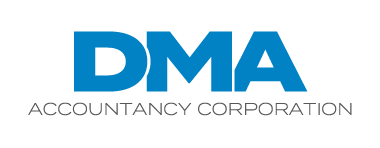Under the Tax Cuts and Jobs Act (TCJA), businesses, including manufacturers, have been required since 2022 to amortize domestic Section 174 research and experimental (R&E) costs over five years, rather than deduct them in the year incurred or paid. Manufacturers have consistently complained that this treatment stifles the development of new processes and products and threatens cash flow — especially for smaller companies. With China offering deductions of up to 200% for eligible research costs, U.S. manufacturers were put at a competitive disadvantage.
The One Big Beautiful Bill Act (OBBBA) changes the R&E expense deduction rules. Here’s what manufacturers need to know.
OBBBA’s Sec. 174 amendments
The OBBBA permanently reinstates the pre-TCJA treatment of domestic R&E costs for tax years beginning after 2024, so manufacturers can deduct them in the tax year they’re incurred or paid. Foreign R&E costs remain subject to 15-year amortization.
Also under the OBBBA, small manufacturers that satisfy a gross receipts test can claim the R&E deduction retroactively to 2022. (For 2025, average annual gross receipts for the previous three years must be $31 million or less.) And any manufacturer, regardless of size, that incurred domestic R&E expenses in 2022 through 2024 may elect to accelerate the remaining deductions for those expenditures over either a one- or two-year period.
The immediate deduction of qualified R&E expenses isn’t mandatory. Depending on a variety of factors, in some situations, claiming it may not be advisable. Manufacturers generally can instead elect to capitalize and amortize such expenses paid in a tax year after 2024 over at least 60 months. The election must be made by the due date, with extensions, of the original tax return for the first tax year to which the election applies. For 2025, a manufacturer that makes an accounting method change to capitalize and amortize R&E expenses will be deemed to have made the election.
R&E expenses may also qualify for the Section 41 research tax credit. But businesses can’t claim both the deduction and the credit for the same expense. If a manufacturer claims the research credit, the R&E deduction generally must be reduced by the amount of the credit. Alternatively, manufacturers can elect to claim a reduced research credit instead.
Retroactive deductions for small manufacturers
As noted, eligible small manufacturers can elect to treat the changes to Sec. 174 as if they took effect for tax years beginning after 2021, rather than after 2024. How to do this depends in part on whether the manufacturer has already filed a 2024 tax return.
If the manufacturer filed a 2024 return before August 28, 2025, an automatic extension to supersede that return to include the new guidance is available. However, the manufacturer must file that replacement return by the extended deadline (typically September 15 or October 15). Alternatively, the manufacturer can file an amended 2024 return, following one of the two options discussed below.
If the manufacturer didn’t file a 2024 return by August 28, the manufacturer can file by the applicable extended deadline and either:
- Elect to expense eligible R&E expenses under the new guidance, which would also require filing amended returns for 2022 and 2023, or
- Do an automatic method of accounting change and a “true-up” adjustment on the 2024 return for the 2022 and 2023 R&E expenses.
Elections must be made by the earlier of July 6, 2026, or the applicable deadline for filing a claim for a credit or refund for the tax year (generally, three years from filing the return).
Accelerated deductions for all manufacturers
Manufacturers with unamortized domestic R&E expenses under the TCJA can elect to recover those remaining expenses fully on their 2025 income tax returns or over their 2025 and 2026 returns.
Notably, the IRS guidance states that taxpayers “may elect to amortize any remaining unamortized amount” of such expenses. This language suggests that the deduction will be considered an amortization expense. This is significant in light of changes the OBBBA made to the interest expense deduction for businesses, including manufacturers.
The business interest deduction generally is limited to 30% of the manufacturer’s adjusted taxable income (ATI). (Manufacturers that meet the same annual gross receipts test discussed earlier are exempt from the limitation.)
Under the OBBBA, beginning in 2025, ATI for purposes of the interest deduction is calculated without deductions for depreciation, amortization or depletion. So amortization deductions are “added back,” potentially increasing the ATI and the allowable business interest deduction. If R&E expenses aren’t treated as an amortization deduction, they could reduce the allowable business interest deduction.
Decisions, decisions
The OBBBA’s revisions to Sec. 174 are welcome news but also require manufacturers to make some important decisions about the various election and filing options discussed earlier. Another significant decision is whether to re-shore foreign R&E activities to expedite the deduction of the related expenses.
© 2025


Recent Comments